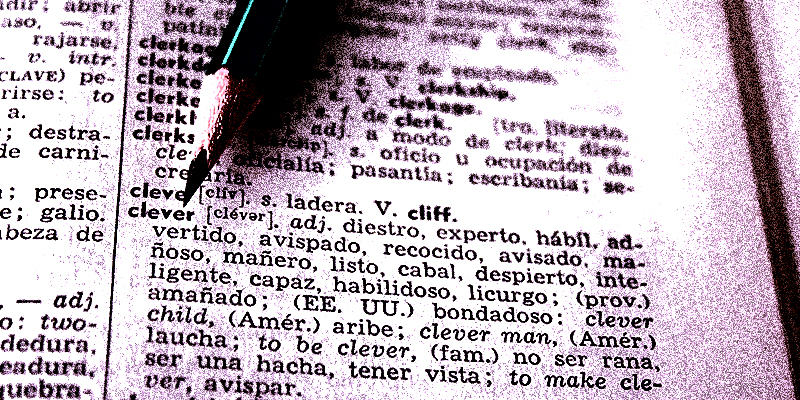Authenticity is a big issue in literature. Who wants to read a fake? Nadie. Nobody! Now, when discussing English texts, the topic of authenticity tends to focus on how to express in this language events or dialogues that happen in another. My previous piece, “Writing with an Accent,” was precisely about how I used a foreign language (Spanish) to preserve authenticity without compromising understanding in my novel Death under the Perseids, which takes place in Havana.
But I have also encountered the opposite problem—how to write realistic-sounding scenes from the point of view of an American character, considering that I am not American myself and English isn’t my first language. Here, the catch is that my readers are likely to detect any awkward dialogue and unrealistic situations. After all, they are reading a text in their own language. They know perfectly well what sounds right and what doesn’t.
My most recent novel, Last Seen in Havana, a sequel to Death under the Perseids, is written in alternating chapters that move between the late ’80s and a week in 2020. The ones that happen in 2020 are written in the first person, narrated by Mercedes, a Cuban woman living in the United States. Mercedes goes back to Havana in search of her mother, who disappeared twenty-seven years ago. Writing Mercedes’s chapters in the first person was easy because my circumstances are quite similar to hers. I often sprinkle my dialogues with words in Spanish, like my character does:
Some of my friend’s predictions had turned out to be accurate, but in the most twisted way conceivable.
“To unlock the past, present and future,” she whispered. “So mote it be.”
“Mote un carajo.”
That’s what I do, going back and forth between the two languages without even noticing it.
Dude, that’s, like, not sounding cool
The other chapters follow Mercedes’s mother, Sarah, a young San Diegan who lived in Cuba from 1986 to 1989. When I began writing the novel, these chapters were told in the first person too. In letters to her friend Rob, she describes her marriage to a Cuban Army officer, their life together, and the birth of their daughter Mercedes.
The problem was that the narrator’s voice didn’t convince me. No matter how many “likes” and “dudes” I threw in, it still sounded forced. Fake! I felt as if I were wearing a mask, the mask of an American, which wasn’t thick enough to conceal my true (Cuban) face.
I finally decided to take off the mask, changing the first-person narrator to a third person limited point of view. That allowed me to show Sarah’s understanding—and often misunderstanding—of the Cuban life and culture of the ’80s while keeping my distance and using a neutral language:
Sarah had been looking forward to the May Day parade. It felt like a dream to be at Revolution Square, surrounded by so many people who breathed the socialist ideals she used to admire from afar. Now she was in the thick of it!
She went with Joaquín, Lo, Pepe and other members of their CDR. A special vehicle was available to take Miramar neighbors to the Plaza de la Revolución. They had been told to be at a designated spot by nine-thirty, and when the group arrived, a clean, large bus was already waiting for them. By the time they got to the square, hundreds of people were already gathered there. It felt odd that they weren’t demanding higher wages or protesting this or that, which was Sarah’s idea of an International Workers’ Day march. They were simply showing their commitment to the revolution, and she liked the celebratory mood.
A word about dialogue
When the entire conversation is supposed to happen in Spanish, I always wonder if I should use this language at all in the English text. Wouldn’t it be redundant or worse, unnatural? In Sarah’s chapters, since the story is told from her point of view, Spanish is used only when it says something about the way the words sound to her:
“Let’s go to an actividad de mi cuadra alegre y bonita!” Dolores said.
“What’s that?” Sarah asked. All the syllables had merged together in Dolores’s mouth and she hadn’t understood a thing.
“You’ll see! Come with me!”
It turned out to be a street cleaning event where neighbors got together to make the block look “cheerful and beautiful.” They picked up trash, swept the sidewalks and planted flowers in public areas.
Here, I introduced the concept of “actividad”—a word that was frequently used in Cuba in the ’80s to describe community-organized events. The English equivalent “activity” would have been misleading.
The other side of the coin
In Sarah’s chapters, I made sure that readers knew when she used English words, since, again, the dialogue was supposed to happen entirely in Spanish:
When Sarah approached a hotel employee and asked about a surfboard, the man shook his head furiously.
“No, compañera, no!” His voice sounded tainted with fear. “We don’t have that. These activities are forbidden here!”
“But, dude!”
She said it in English, without thinking. The employee gave her a blank look.
I’m already considering how to deal with all that if were to translate the book into Spanish. . .
The most challenging part about adopting the voice of a character whose background differed so much from my own was attempting to wear the narrator’s mask. Taking it off freed me, allowing me to reveal the character’s feelings and experiences without forcefully stepping into her shoes. There is a limit to “authenticity,” and the novel got stronger when I found and respected it.
***


















